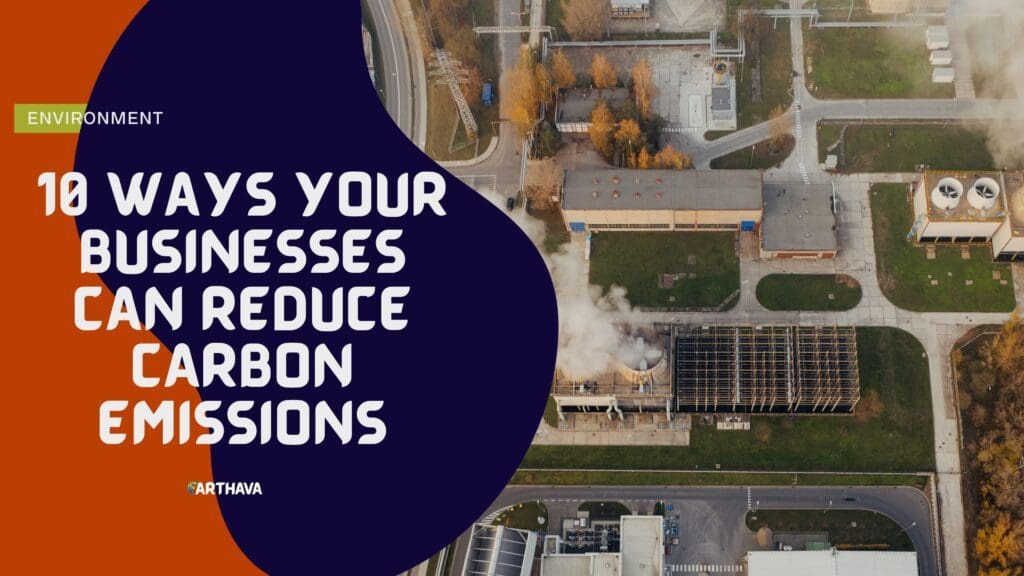Across the world, businesses are focusing more and more on reducing emissions. The climate crisis calls for immediate action. Luckily, you and your coworkers can take concrete steps to help. From traditional recycling to adopting new systems.

The Carbon Footprint of the Digital Age
While we typically think that our atmosphere is being damaged by burning fossil fuels, vehicles, and factory pollutants, we are not taking into consideration the damage being caused by the digital age. Every day emails, tweets, Facebook “Likes”, video, and music streaming, online browsing, and shopping also cause damage to the atmosphere.
Huge amounts of CO2 emissions are created each time use our computers and digital devices, and while we can take a proactive stance and make a conscious decision to try and reduce our own carbon footprint there are some actions that are beyond our individual control.
Spam emails highlight the problem, we don’t ask for them and yet we are bombarded by them on a daily basis. Spam and junk mail are not just annoying they are causing harm to the atmosphere every time they are sent.
Every time we use the internet it causes atmospheric harm and while we remain blissfully unaware of the problem we will continue to use search engines, and send tweets and emails.
The following infographic shows what some of the big online companies, such as Amazon and Google, are doing to counteract the problems caused by our digital age. It may just be the source of information you need to change your digital habits and help lower your own personal carbon footprint.

use these 10 methods to reduce carbon emissions:
1. Reduce, Reuse, Recycle
They’re the words teachers recite to kids from a young age, but they still ring true decades later. Reducing, reusing and recycling is an effective way to combat business emissions. These actions decrease the number of products your company uses and, with them, your carbon footprint. They form the basis for how you can create a more sustainable workplace.
2. Use Energy Star Appliances
When becoming more sustainable, your company should focus on replacing outdated products, like appliances, with Energy Star-approved variants.
This organization certifies which utilities are optimal for the environment, meaning they use less energy and emit fewer emissions. Something like the breakroom refrigerator probably has a more environmentally friendly alternative on the market. Simply look for the relevant certification.
3. Switch to Better Lighting
While you can find lights that have an Energy Star sticker, they deserve their own section. Changing your lights is a subtle way to become more sustainable in the workplace. Often, buildings have fluorescent bulbs that waste energy and have short lifespans. Instead, you can switch them out for LEDs, which last longer and use energy more efficiently.
The Internet of Things (IoT) is another potential ally. It lets you install occupancy sensors that automatically adjust lighting conditions based on who’s using the space or not using it.
4. Cut Down on Air and Car Travel
Your business’s carbon footprint extends to how you and your coworkers travel. If you take flights or road trips, those emissions add up quickly.
Sometimes, these trips are necessary. Other times, you can cut down on your business emissions by using virtual platforms. Zoom and Skype are instant video chatting platforms that you can initiate remotely. No more need to travel!
5. Reduce Food Waste
Believe it or not, food has a carbon footprint. In fact, food waste makes up 6% of total global greenhouse gas emissions. You can initiate a program or some form of awareness within the workplace where everyone works towards wasting less food. Then, the company will be reducing its role in that 6% of emissions.
6. Change Up Your HVAC
The weather in the location you work in has a significant bearing on your heating and cooling system. If it gets too hot or cold, your HVAC system could be wasting a lot of energy. Instead, you can invest in smart systems that adjust properly to save energy.
A smart thermostat is one example — it adjusts when no one is in the office to reduce consumption and, therefore, emissions.
7. Switch to Renewable Energy
Here’s the big one. Renewable energy is perhaps the most necessary step when it comes to reducing emissions. With sources like solar and wind, businesses cut down on the carbon they produce and can also save on costs in the process. You can look into microgrids for solar power — they’re the best way to make the transition.
8. Work With Sustainable Suppliers
The business itself is not the sole contributor to its overall carbon footprint. The company is part of the greater supply chain, which may have some practices that are harmful to the environment. In fact, shipping makes up 2% of global emissions. Find suppliers that put sustainability at the top of their priority lists — it will help everyone reduce their output.
9. Purchase Carbon Offsets
Carbon offset programs are a great way to give back to the environment. They use the term “offset” because organizations end up displacing the emissions that your company puts out with an activity that helps the world. For instance, many organizations will plant trees, which help ecosystems thrive. These programs may be tax-deductible, too.
10. Raise Awareness
Last but certainly not least, raising awareness is a critical step. Whether it’s in your personal or work life, you can share these tips with everyone. Let them know that reducing carbon footprints can be a collective effort. If everyone in the workplace works together, these transitions will be smooth and life-changing.
Change for the Better
These steps show the necessary modifications you can make to your workplace. Whether you start small or jump right in, it all adds up. The time is now to make these changes for a better future.


